Rias Bajas
Boiro,
Corrubedo,
Muros,
Rias Bajas,
Sailing,
Spain
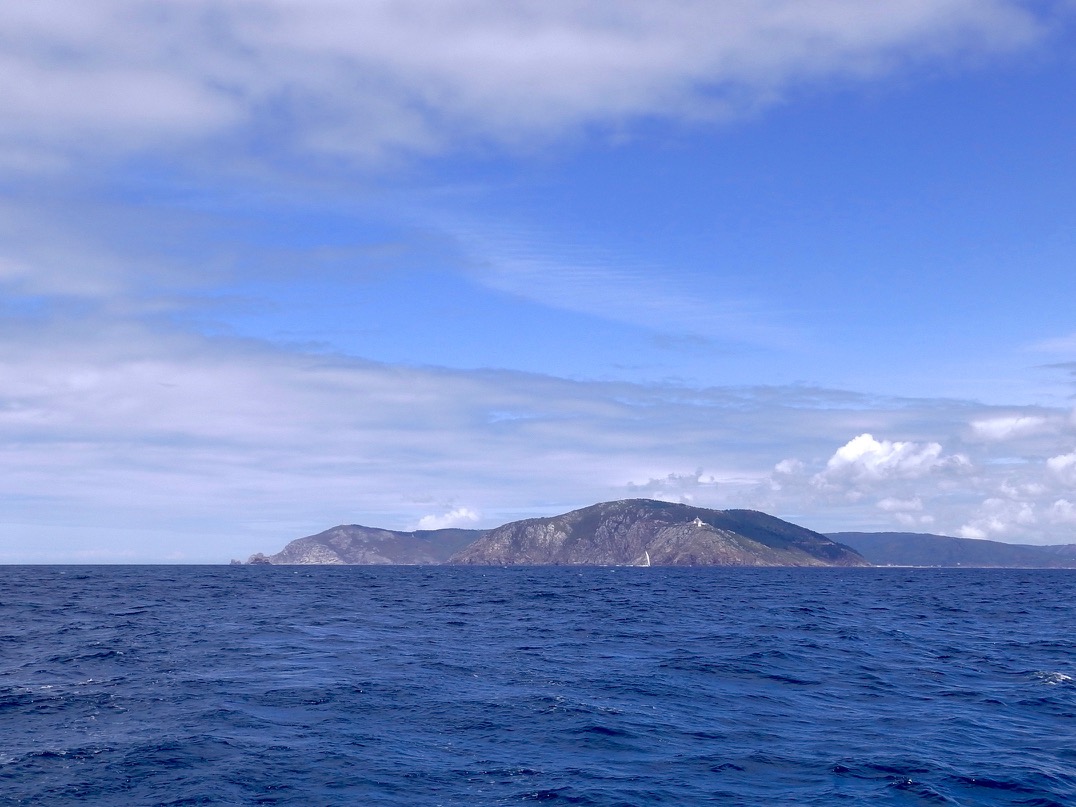
After finally escaping Muxía, we rounded Cape Finisterre (from latin finis terrae, "end of the earth" as the Romans believed it to be) and left the Rias Altas and the Costa da Morte (Death Coast) behind. This next set of ancient submerged river valleys was known as the Rias Bajas, and they were much larger, promising even milder weather, better shelter and many ports and anchorages to explore. After rounding Finisterre and a couple other corners, we passed a place called San Francisco and soon found a great anchorage just NE of Muros at Abelleira.
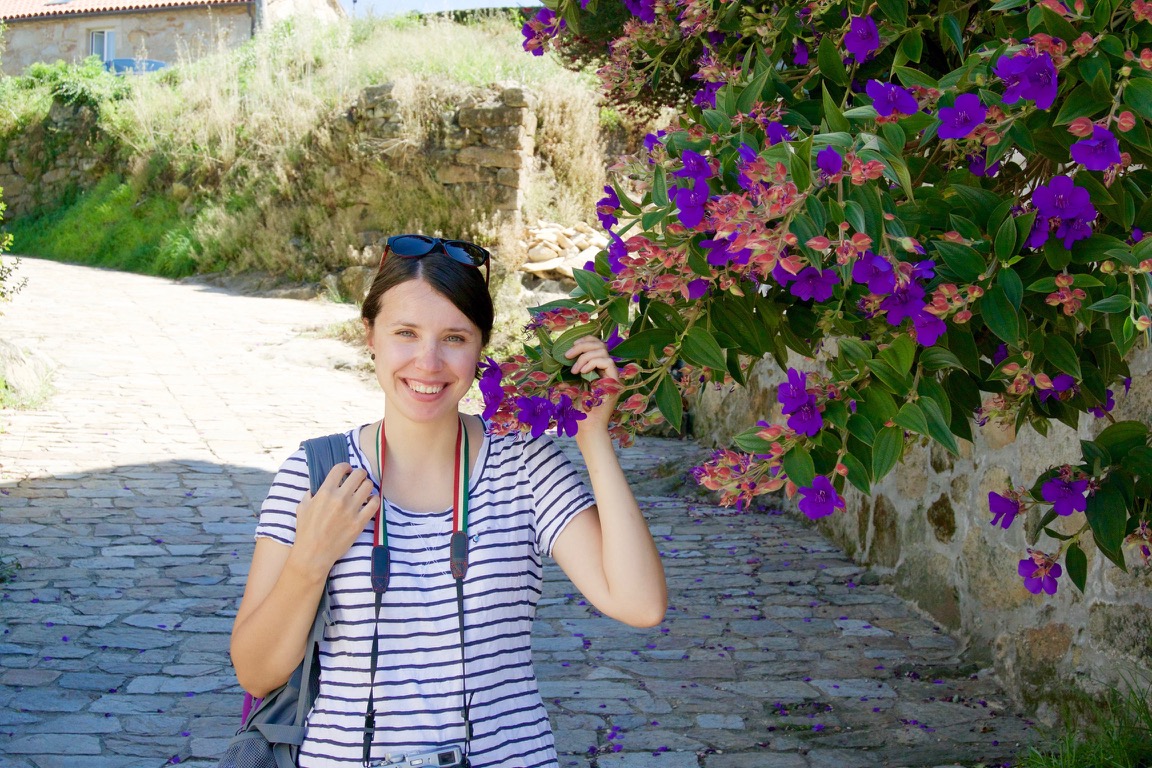
The water was still a bit fresh at 15°C, so I put on my wetsuit before jumping in to shave Songbird's green beard. When I was in the boatyard applying the Coppercoat antifouling about two years ago, I foolishly painted it in the exact same area the original antifouling was in, keeping the original waterline. This turned out to be a mistake, because I then stowed oodles of stuff on board, cruising gear, tools, spare parts, supplies, food, water, diesel and Elvyra's collection of hats, naturally causing the boat to sit lower in the water than when empty. So the "waterline" was now a little bit under the water, and untreated white gelcoat was constantly submerged in the ocean. This soon demonstrated why we sailors spend so much money and effort on antifouling treatments. The ocean being full of life, this life soon begins to take hold on the un-antifouled piece of boat hull, and within a few months results in a "green beard" growing all around the top of the antifouling, which needs to be removed every now and then because dragging this beard through the water can slow a sailboat down quite a bit. We'd last done this in Cherbourg in June and so I spent an hour swimming around the boat with brush in hand and scrubbed and scraped off the green stuff along with some doomed baby barnacles.
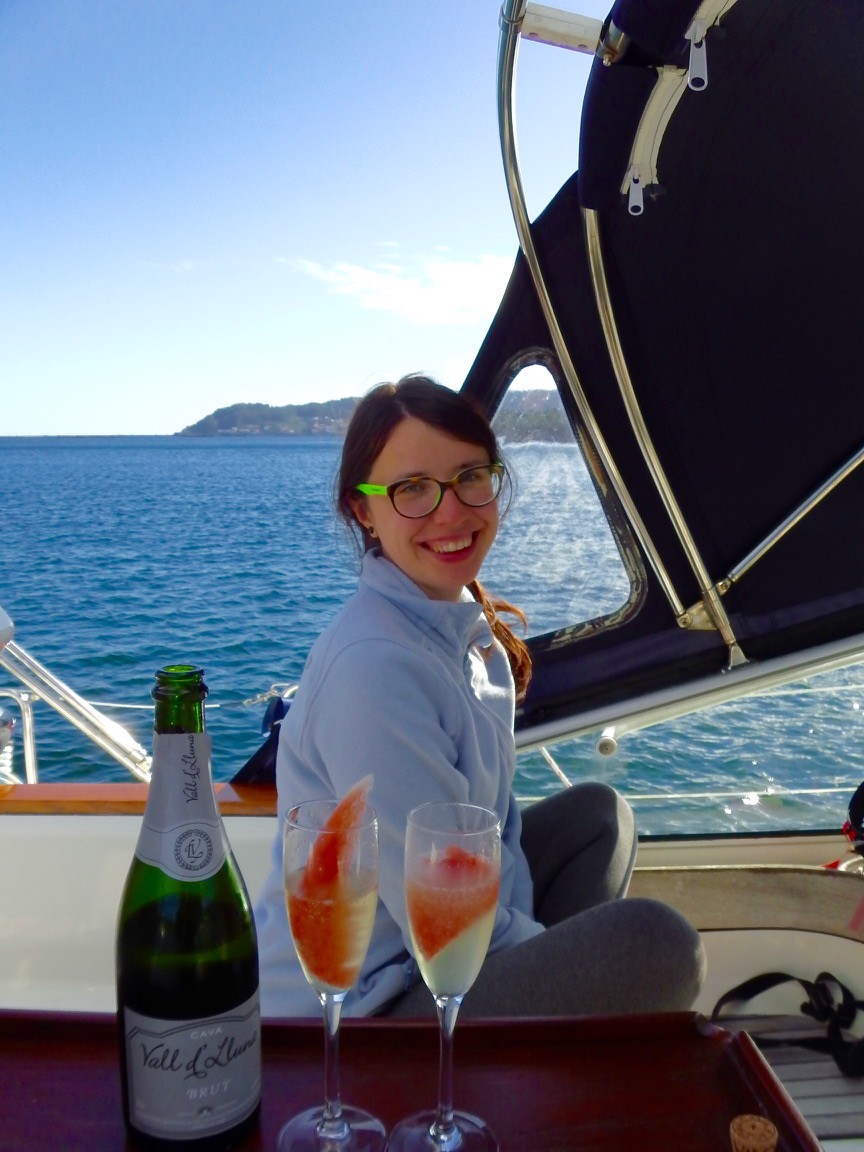
Having spent two nights at Abelleira, we wanted to anchor in Muros bay and take the dinghy into town, but had no luck with the anchorage at all and following five failed attempts with poor holding (a first for our trusty Rocna) we gave up and radio'd the marina, where Pedro, the marina jefe helped us into a tight berth. After satisfying his desire for "papers, papers, papers, papers..." and leaving a €10 deposit for a set of keys to the gates and facilities, he gave us the tour of his well-run marina. We went for a walk, found the supermarket still closed but discovered a little beach right next to it. Had a refreshing swim and were pleased to discover there were outdoor showers to rinse off after.
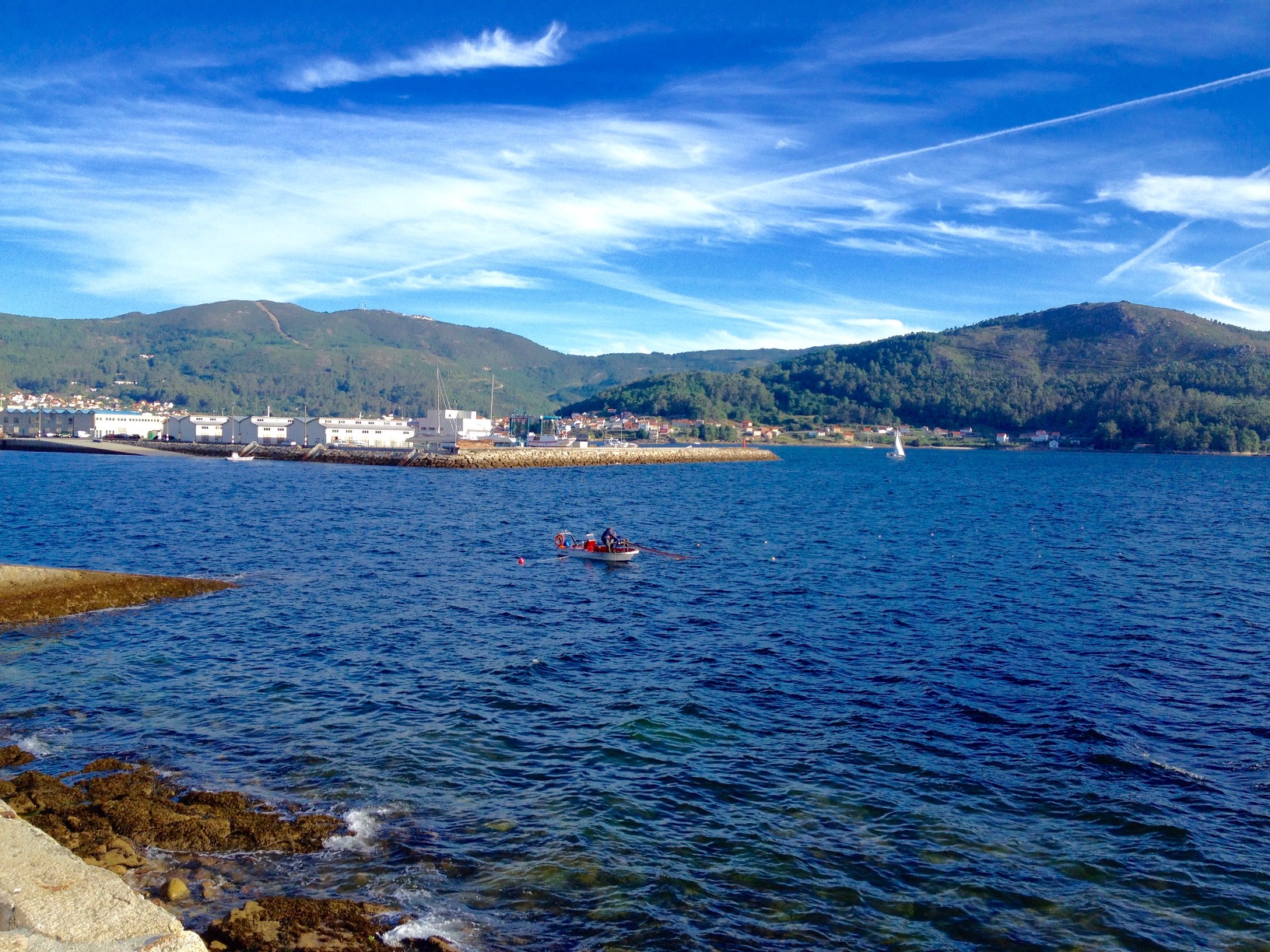
A later peek into the pilot books mentioned "variable holding" for the Muros anchorage. Two boats were already there and one of them turned out to be Windsong, someone we'd met in Brighton (which I'd totally forgotten, although the boat and name seemed faintly familiar). They reported no problems anchoring. Variable indeed. At least it's good to see the pilot books are right! We used the marina stay get some laundry done and fill the water tanks.
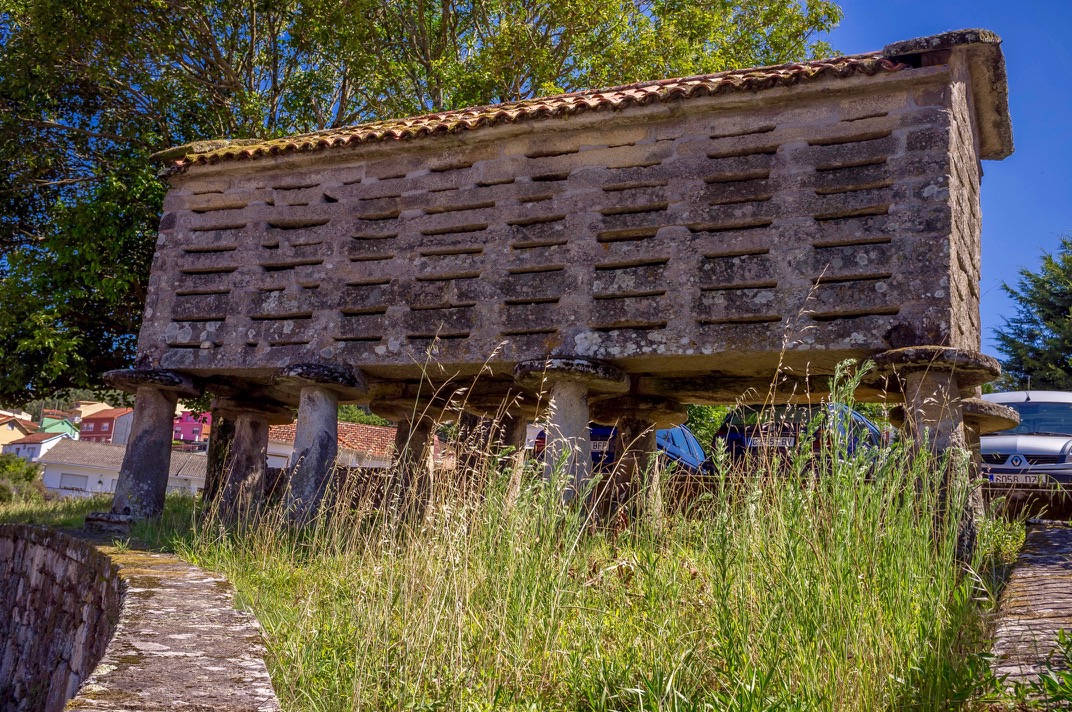
Muros town was described as scenic, but didn't excite us that much. Perhaps we're getting a bit spoiled from all the beautiful scenery around us. Noteworthy was the well-stocked "Hiper China" store, where for a few coins we acquired a pack of glue strips (for trapping the ubiquitous flies), a new gas lighter for the cooker and a set of watercolours for Elvyra. We also stocked up at the supermercado, which had unfortunately run out of fresh bread, so we had to buy some really awful pre-sliced toast.
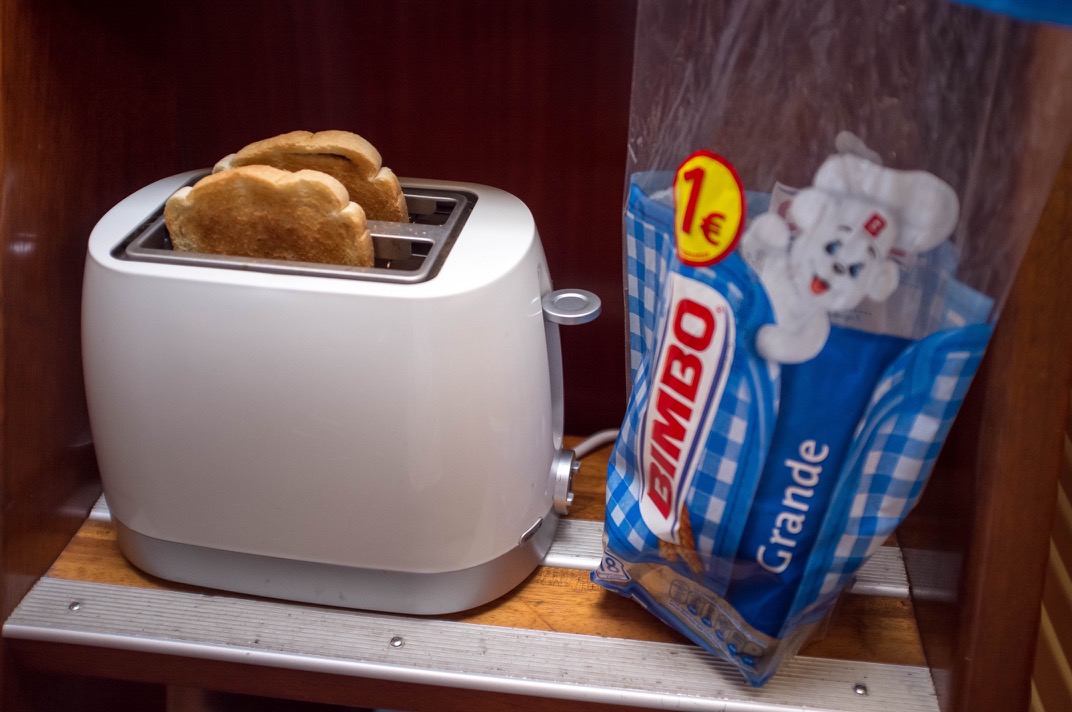
We wanted to head into Ria de Arousa next, but found that wind and swell permitted us to stop at Corrubedo, which is open to the SW. The land just behind the beach is the site of a national park due to its remarkable wandering sand dunes of up to 20m height. In front of it is a very long beach covering the entire bay, with the town perched in a corner. In suitable conditions, this is a fantastic anchorage with a great view. We left the town laying to portside and anchored in the northern half of the bay, bisected by one of Galicias many rocks. Holding in the sandy bottom was excellent and after two nights our trust in Mr. Rocna was restored.
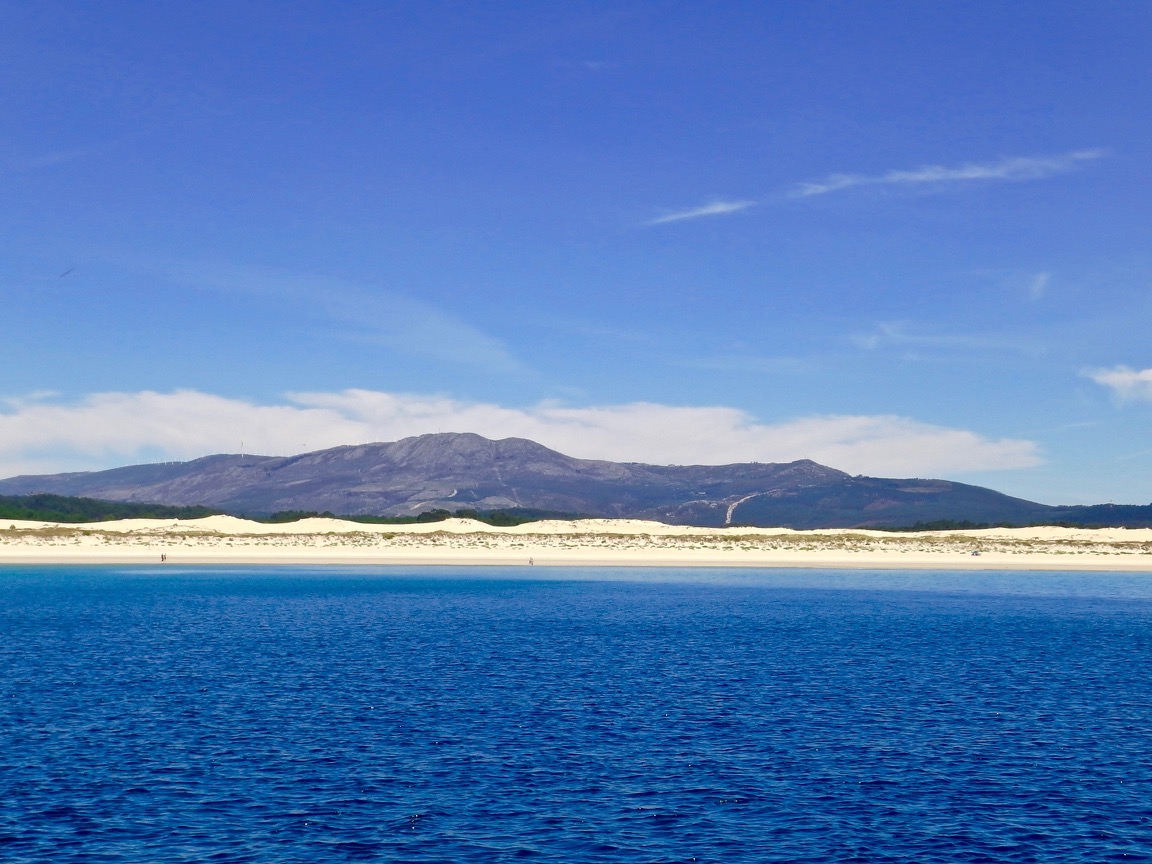
We just chilled at anchor here, taking the occasional siesta, as the nearby town seemed to have an all-night music festival going on, oompah bands in the morning and the daytime fireworks we've seen (and heard) in many places in the region. Unlike night-time fireworks, these do not focus on colourful displays in the night sky, but instead just have a small flash and a big bang, leaving behind small puffs of smoke in the blue sky, much like a WW2 flak.
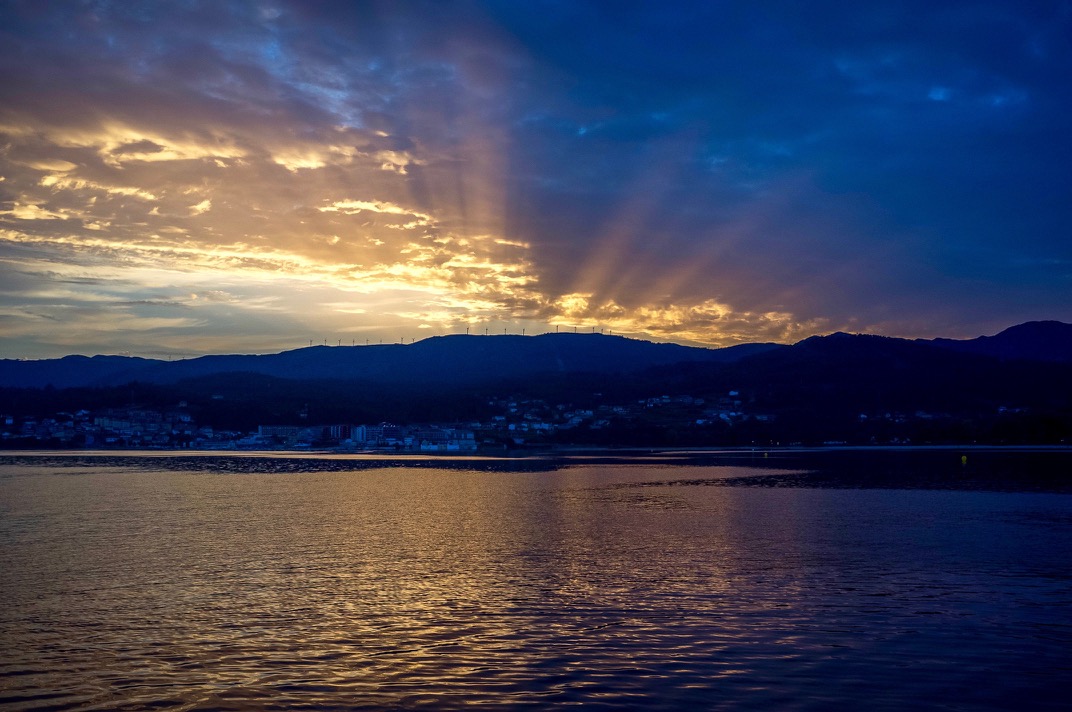
After enjoying Corrubedo's beautiful scenery, we reluctantly pulled up anchor and made our way around a whole bunch of sprinkled about rocks, shallows and islands into Ria de Arousa. As we were in no great hurry, we slowly sailed downwind, sometimes with the engine on at low rpm just to keep enough speed to steer in the lulls. After turning the corner into Ria de Arousa, the wind funnelled around some islands and we got half an hour of fast upwind sailing, making good speed with our freshly shaved hull. This didn't last though, as soon the flat islands turned into big mountains sheltering most of this Ria and providing the very warm summer weather that has made it into a major tourism area.
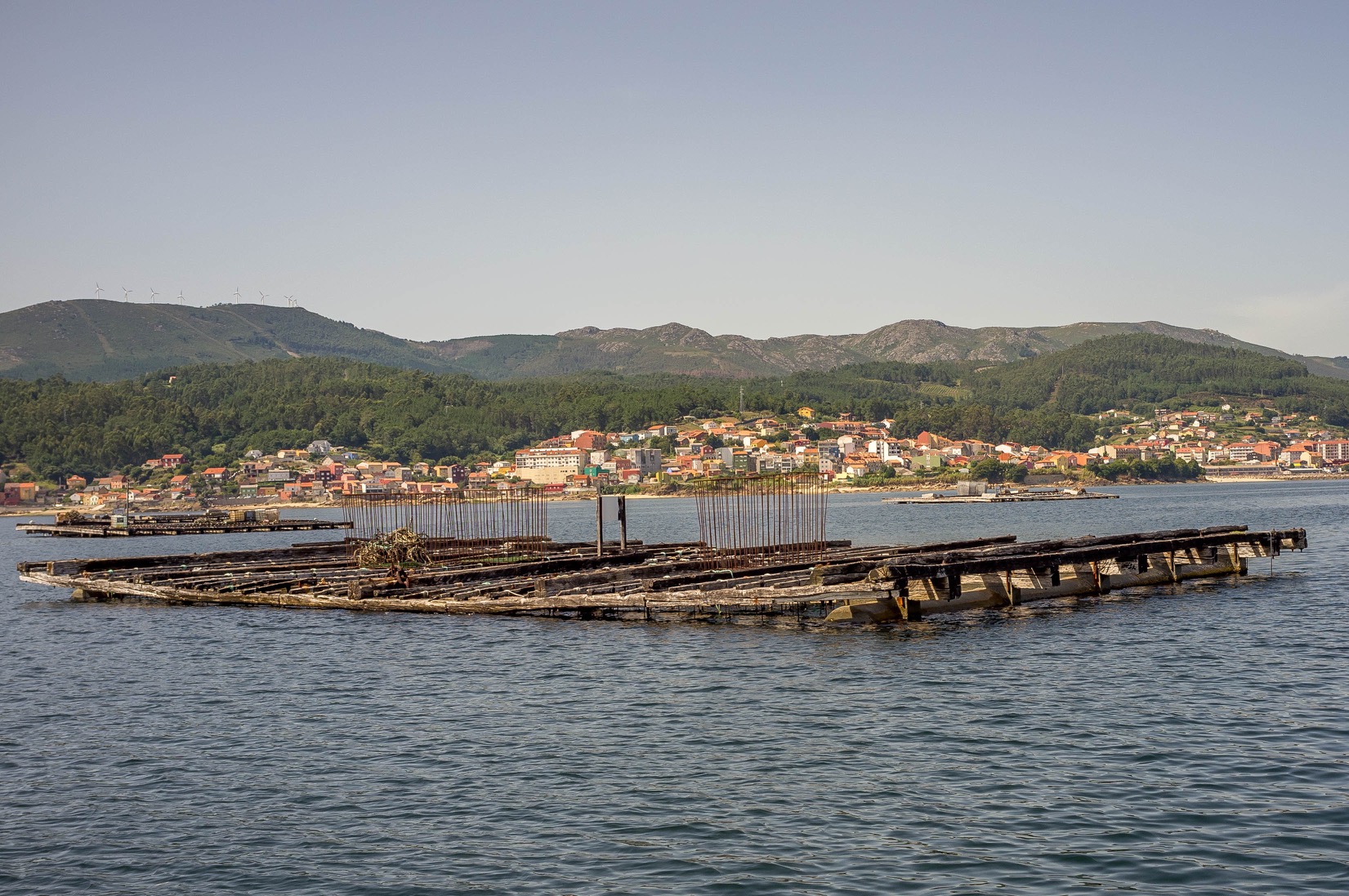
With the engine on, we found our way through the many hundreds of viveros (floating mussel farms) into Boiro, a well sheltered anchorage. The swimming markers deployed off the beach did not permit anchoring in front of Escarabote as planned, but we found a spot next to two Belgian boats further down the beach off a town called Boiro, which had an interesting story to offer.
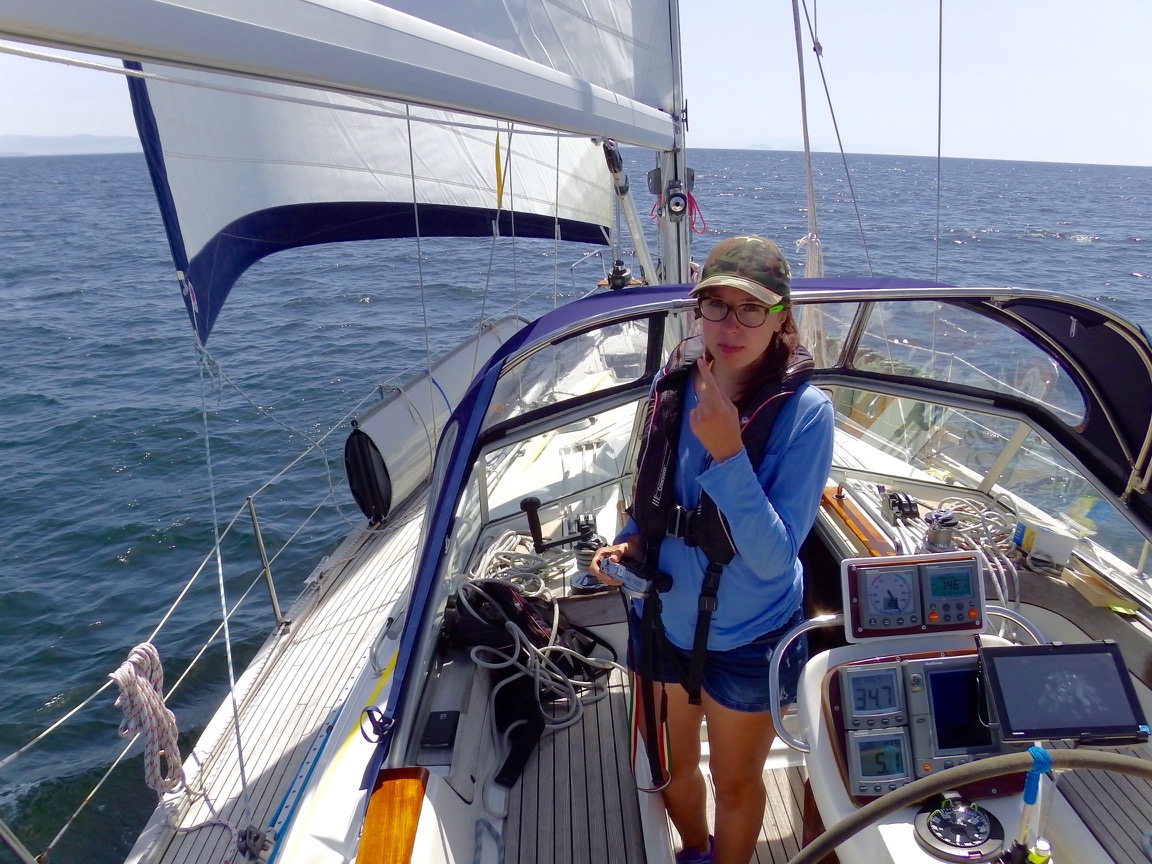
It also offered much warmer water, so here it was that we finally cured Elvyra of her irrational fear of swimming in deep water with the help of two of our fenders. The next day the water was unfortunately a bit too icky to swim - there were dead baby crabs and various intestines floating everywhere. Perhaps left behind by the horde of shellfish dredgers we saw combing the beach in the morning?
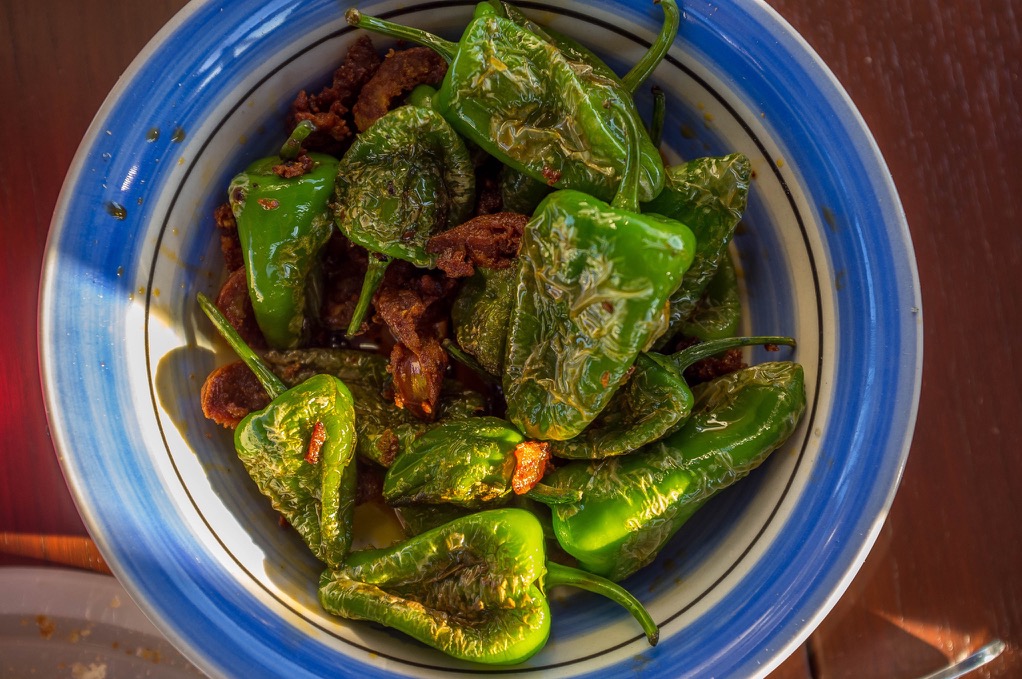
I had time to inspect our engine a bit, looking if I could perhaps find out where the oil had been going that I've lately been pouring into it to top-up oil levels. I found at least some of it it in the bilge below and a closer inspection of the sump bottom with a mirror and flashlight showed that a trace had been running out of a fitting where the crankcase breather hose is connected to the sump. Putting a wrench on this, the fitting turned out to be very loose indeed. Tightening this was easy. Getting the hoseclip off in order to be able to do so was of course not so easy, but eventually done nonetheless. Hopefully this means less regular oil top-ups.